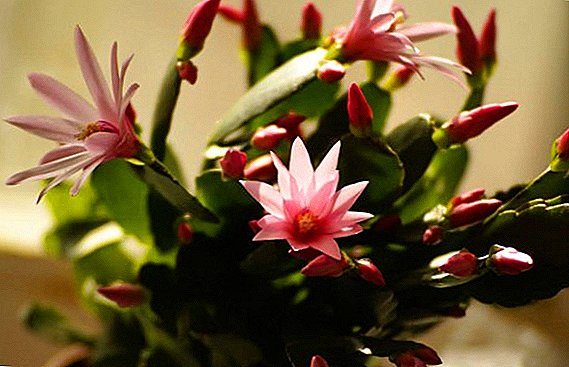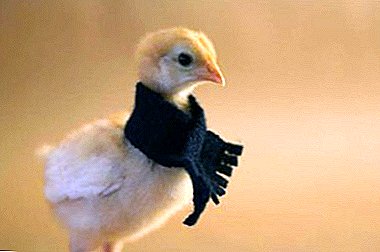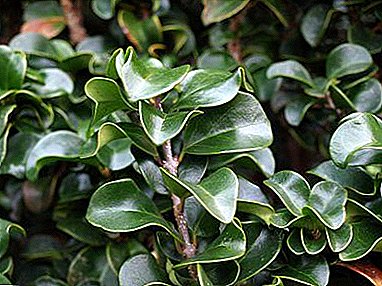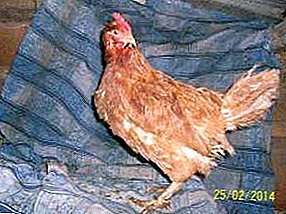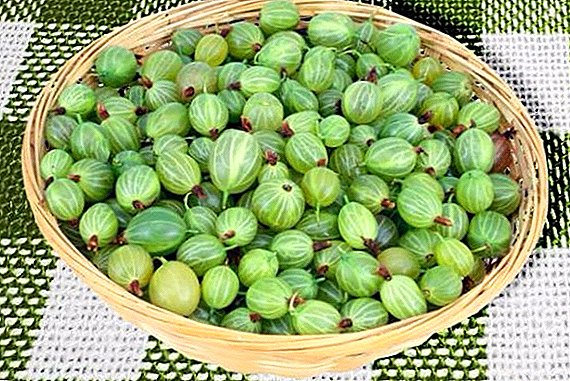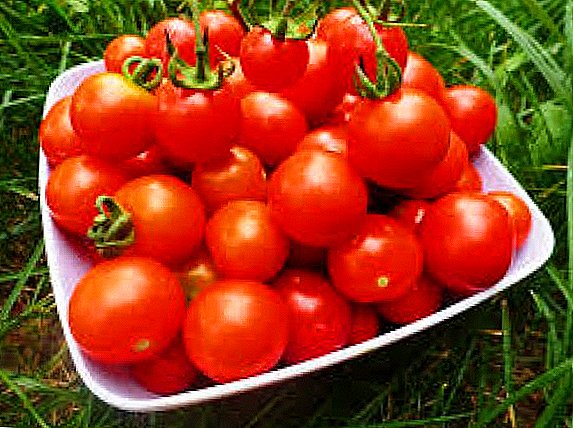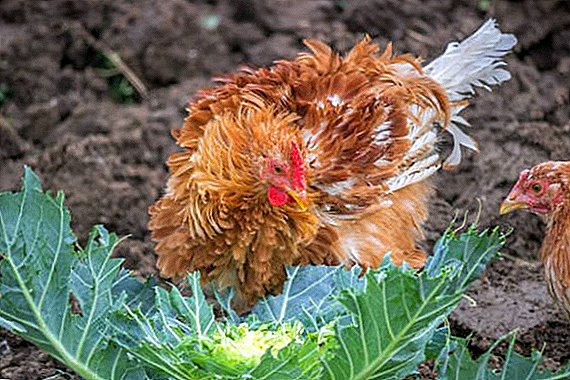 It is believed that chickens are the most unpretentious birds of all living in private farmsteads, but this does not at all mean that they can be fed with anything.
It is believed that chickens are the most unpretentious birds of all living in private farmsteads, but this does not at all mean that they can be fed with anything.
In order not to worsen the state of health of birds, it is worth adhering to some rules of feeding, in particular, when introducing cabbage into the diet.
In what form it can be used, how much to give and whether it will bring benefit - read further in our article.
Is it possible to give chickens
Cabbage is one of the most favorite products of domestic chickens. They can eat it in almost unlimited quantities, eating almost everything they are given. Of course, fresh leaves will be more preferable, although the birds peck well and sauerkraut cabbage, especially if you add it to dry food and mash.
Consider the various options for the use of this vegetable and its impact on the health of poultry. 
Sauerkraut
Fresh cabbage is a good source of vitamins, but in this form it cannot be used all year round. Therefore, in order to stock up on vitamins for the cold season, the collected cabbage leaves are pickled and marinated.
With proper preparation and processing of vitamins in such a product will not be much less than fresh, which means that poultry will be able to replenish their stocks. Squeezed and well-washed finely chopped sauerkraut is usually given to chickens as a supplement to wet masses or dry food.
Birds with pleasure eat this dish.
And the sauerkraut will be equally useful to the growing hens and laying hens, for it will:
- delivers calcium, potassium, iron, phosphorus and magnesium to the avian organism;
- is a source of vitamin C, K, A;
- due to the presence of synthesized lactic acid contributes to a better absorption of all the useful substances;
- activates the normal activity of the stomach and intestines;
- able to suppress the development of putrefactive bacteria due to the presence in the composition of acetic and lactic acids (appear during fermentation).
 As for the size of portions, then the calculation is carried out based on the number of birds in the hen house. For example, for 10 chickens you can make 2-3 kg of mash and add 300-400 g of cabbage to it.
As for the size of portions, then the calculation is carried out based on the number of birds in the hen house. For example, for 10 chickens you can make 2-3 kg of mash and add 300-400 g of cabbage to it.Important! With a lack of vitamins in the usual diet, chickens can eat their own eggs, especially if they have already been damaged. Therefore, in the presence of empty shells in the hen house, it is worthwhile to consider the option of feeding cabbage and greens that can compensate for the shortage of useful substances.
Fresh cabbage
Fresh cabbage not only can, but should be present in the diet of chickens, because it is an excellent source of vitamins. In the simplest version, the heads are simply hung in the hen house at such a height that the chickens themselves can peck leaves, which they gladly do.
Finely chopped cabbage leaves can be added to chopped potatoes, beets, or mixed with any other wet mash, as when self-feeding the bird simply forgets about the existence of other feed.
In moderate quantities (about 100 g of cabbage can be added to 1 kg of feed) such food will be equally useful to all chickens, including layers.  Among the main features of fresh cabbage are the following:
Among the main features of fresh cabbage are the following:
- supplies the body with important vitamins (A, E, C, B1, B2, B6, B9) and trace elements (potassium, calcium, sulfur, phosphorus, chlorine, bromine, molybdenum);
- improves the functioning of the stomach and contributes to a better digestion of food;
- due to the presence in the composition of tartronic acid reduces the accumulation of fat;
- stimulates the bowels and quickly removes toxins and toxins from the body.
Periodically adding fresh cabbages to the feathered ration, you will soon be able to notice how their appearance and appetite will improve.
Did you know? In one egg there can be two yolks at once, but despite this, healthy twin chickens will not be able to get. They will either die in the initial stages of development, or a little later, since there are not enough nutrients for two.
Contraindications and harm
With the normal state of health of the bird, there are no contraindications to feeding with cabbage, but as for the amount given, it is worth knowing the measure. When issuing in pure form or added to the mash in large quantities, an upset stomach is possible, although this is rare.  If the birds already have problems, then it is not necessary to aggravate the situation even more and it’s better to temporarily abandon cabbage leaves in the birds ’diet.
If the birds already have problems, then it is not necessary to aggravate the situation even more and it’s better to temporarily abandon cabbage leaves in the birds ’diet.
What else can feed chickens
Since chickens are practically omnivorous birds, it is not surprising that many foods can be present in their diet. For example, potatoes, legumes (especially peas and beans), as well as fish and even meat cuts are often added to the usual cereals. Let's find out how useful and appropriate such food will be for chickens.
Find out whether and how to give chickens potatoes, peas, salt, onions, beets, oats, bran, grass, garlic, meat and bone meal, fish oil.
Potatoes
Potatoes - a very nutritious product that helps to quickly saturate the bird and goes well with other types of food (cereals or greens). The only thing you should not forget when issuing it is preliminary heat treatment.  At elevated temperatures, the dangerous substance solanine, which is found in large quantities in the peel and upper layers of potatoes, is destroyed. You can start feeding the chickens with a root crop from the 15th day of their life, using first 100 g of boiled food, and then gradually increasing this amount.
At elevated temperatures, the dangerous substance solanine, which is found in large quantities in the peel and upper layers of potatoes, is destroyed. You can start feeding the chickens with a root crop from the 15th day of their life, using first 100 g of boiled food, and then gradually increasing this amount.
Pure potatoes do not give, most often mixing it with wet mash.
Important! Potato peel is better not to give, because they are very rough and long digested by the bird's stomach.
A fish
Chicken fish and fish products are always perceived very well, and sometimes they even fight for this type of food. This is an excellent source of calcium, which will be equally useful for young animals - during the strengthening of bone tissue, and to laying hens - for the strength of the eggshell.  Of course, we are not talking about the daily feeding of fish, but 1-2 times a week it should be added to the diet, adhering to the following rules:
Of course, we are not talking about the daily feeding of fish, but 1-2 times a week it should be added to the diet, adhering to the following rules:
- salted and smoked fish - taboo for chickens;
- before giving out the fish, it must be boiled well so that all the bones are soft enough;
- when feeding fish to a bird, take care of a sufficient amount of pure water, as it causes strong thirst;
- for better digestibility of the product, it is desirable to grind and mix with other feed.
It is rather difficult to calculate the exact consumption rate of fish by chickens, but on average, 100-150 g of chopped boiled product can be added to 1 kg of mash.
Peas
Peas are a rich source of vegetable protein that chickens need as much as other nutrients. In the diet, this product begins to enter first in boiled form and in small portions.  As the bird grows and adapts to the feed, it is possible to gradually replace steamed or boiled peas with dry ones, and in order for the birds to eat it better, try mixing peas with other dry foods.
As the bird grows and adapts to the feed, it is possible to gradually replace steamed or boiled peas with dry ones, and in order for the birds to eat it better, try mixing peas with other dry foods.
Those poultry farmers who have already tried such a menu say about raising the egg production of chickens, but, of course, it is impossible to feed birds with peas alone. On average, it is enough several times a week to fill in with 200-300 g per 1 kg of other feed.
Did you know? Peas were used as fodder for livestock in ancient Greece, that is, in the 4th-3rd centuries. BC e., and even in those days, he was considered the main food of the poor inhabitants.
Beans
Like peas, beans are also a good source of protein, so they may be present in certain amounts in the diet of chickens. It is best to add it to the wet mash in boiled form, thus complementing potatoes, feed, nettles and other food used.  In general, the proportion of beans should be of the total amount of food given to feathers.
In general, the proportion of beans should be of the total amount of food given to feathers.
Chickens need a balanced diet, no less than people, so if you want the birds to always be healthy, then if possible try to diversify their diet as much as possible, including not only cabbage and potatoes, but all the other named products, of course, adhering to the rules of their issuance.


